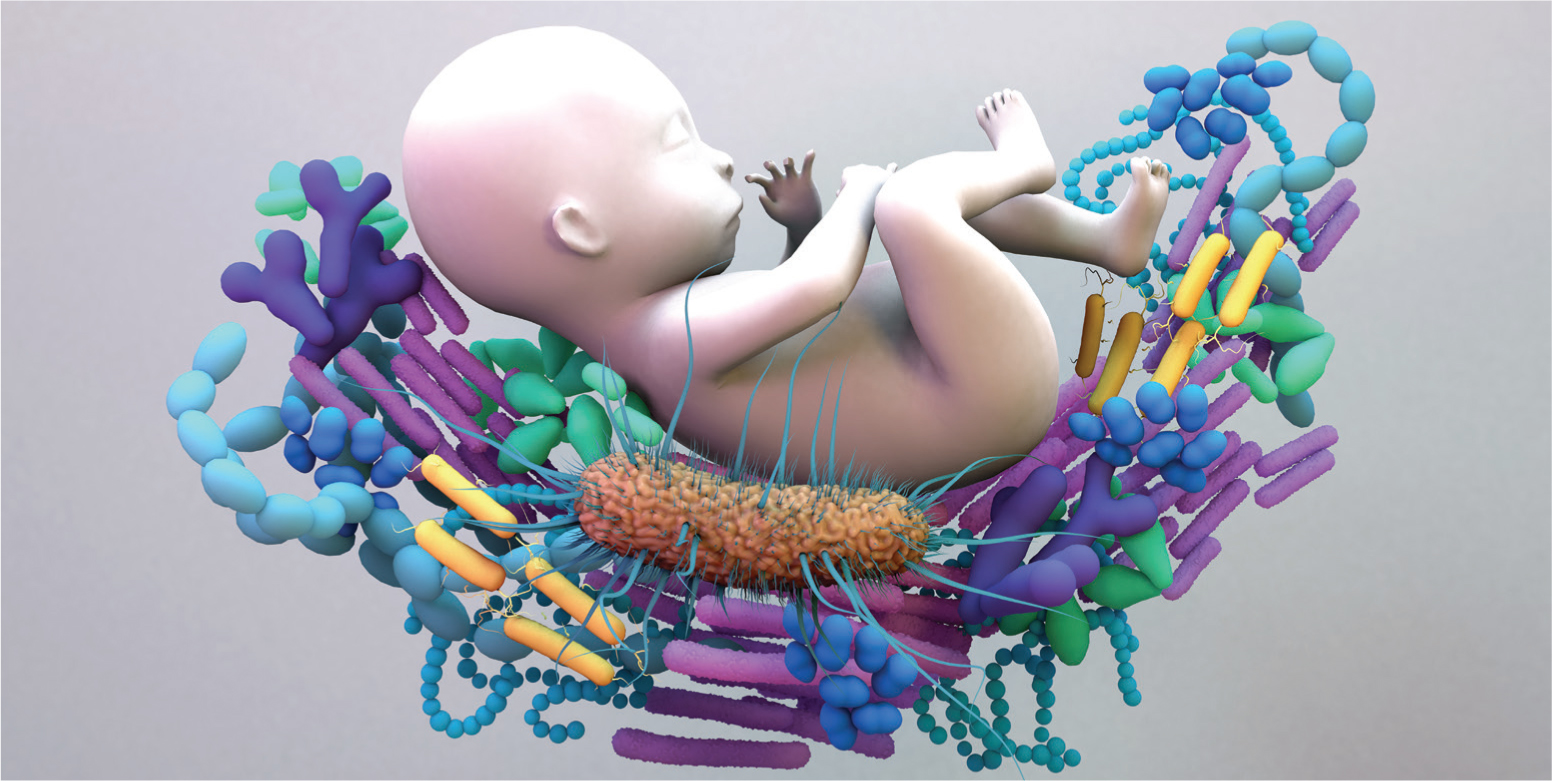The human microbiome is the collective term for all the microorganisms and their genetic material, known as microbes, that live and thrive upon and within our bodies. This includes bacteria, viruses, fungi, archaea and protozoa. Trillions of microbes are encompassed within the human microbiome, and these can be separated into subsections dependent on their location within the body. For example, ‘gut microbiomes’ refers to the microorganisms (and their genes) that reside in our gastro-intestinal system (The Human Microbiome Project Consortium, 2012; Prescott, 2017). The terms microbiota and microbiome are often used synonymously. However, there is a difference, as the microbiome definition refers to microorganisms and their genetic material, whereas the microbiota refers only to the microbes themselves. The microbiome is not exclusive to the human race, as animals, plants, soils and oceans all have their own microbiomes.
The human microbiome is an essential part of biology that supports many physiological functions and plays a major role in maintaining human health. The vertical transmission of microbiota from mothers to their infants has occurred throughout a period of millions of years, representing hundreds of thousands of host generations and untold billions of bacterial generations. The microbiome is a symbiotic ecosystem that has evolved alongside humanity and connects us to our ancestors and genetic lineage (Moeller et al, 2014).

The development of the infant microbiome commences in utero. During pregnancy, maternal microbiota may indirectly affect the fetus through the maternal immune response, microbial factors that may cross the placenta or through factors such as stress or diet (Romano-Keeler and Weitkamp, 2015; Weaver et al, 2017). Both the maternal gut and vaginal microbiota change with gestational age, and it is thought this may enhance metabolic and epithelial function. Lactobacilli bacteria dominate the mother's vagina in preparation for birth and breastfeeding (Dominguez-Bello et al, 2019).
The fetus gains exposure to maternal vaginal and perineal microbes following rupture of the chorioamniotic membranes, as maternal microorganisms are soaked into the infant's skin and sensory organs and are swallowed (Dominguez-Bello et al, 2010; 2019). During vaginal birth, an infant is likely to have contact with maternal fecal matter, and this exposure to maternal gut microbes facilitates infant gut colonisation. The structure of the infant microbiome is affected by this maternal transfer of microbiota, which help develop the newborn's immature gut and immune system (Mueller et al, 2015). These influence diverse physiological processes, including energy metabolism, obesity, glucose homeostasis, blood pressure control and behaviour (Dominguez-Bello et al, 2016).
The extent to which childbirth practices may interfere with maternal transmission of microbiota are not completely understood, although evidence suggests that operative birth and exposure to intrapartum antibiotics alter bacterial colonisation and the construction of the infant microbiome (Stearns et al, 2017). While caesarean birth can be a life-saving procedure, the infant is unlikely to have acquired the full set of its mother's vaginal microbes, because they do not pass completely through the birth canal. Prophylactic antibiotics administered to prevent infection associated with major abdominal surgery are also likely to alter the mother's microbiome and in turn, the infant's microbiome. An infant born by elective caesarean section is also likely not to have been exposed to the stresses, pressures and hormone releases associated with vaginal birth that may serve to act as epigenetic triggers (Rigon et al, 2012). Whether because of an altered microbiome, or because of potential epigenetic changes, infants born by caesarean section are at an increased risk of developing asthma, type 1 diabetes, obesity and coeliac disease (Ajslev et al, 2011; Azad et al, 2016; Mueller et al, 2015; Parkin et al, 2021).
Following birth, factors such as opportunities for skin-to-skin contact, breastfeeding, antibiotic treatment, diet or environmental exposure further modulate and may alter the infant's microbiome and immune system development. This understanding is still unfolding, and recent research has focused on neonatal gut function, nutrition, the microbiome and long-term metabolic outcome (Embleton, 2017; Neonatal Research, no date; UNICEF, no date).
Skin-to-skin contact following birth is important, providing opportunities for further colonisation of maternal microbes, as well as other well-documented benefits, such as thermoregulation (Combellick et al, 2018). ‘Swab-seeding’, a practice proposed to partially restore the gut microbiome of elective caesarean section infants, involves swabbing infants born by elective caesarean section immediately after birth with the mother's vaginal secretions. Preliminary results indicate this could help partially restore some areas of the infant microbiome, but is not a recognised medical procedure and because of the small sample size of published results, the research is not proven to be safe or effective (Dominguez-Bello et al, 2016).
Breastmilk provides bioactive compounds and infant microbiome diversity, and development is closely tied to the ingestion of oligosaccharides found in human milk (Underwood et al, 2015; Cheema et al, 2022). Human milk oligosaccharides are digested by the microbes newly arrived in the infant gut and feed the bacteria received from the mother during vaginal birth, including Bifidobacterium longum subspecies infantis. This enables the ‘right’ kind of microbes to thrive and quickly colonise the baby's gut, crowding out harmful pathogens and optimising immune system development (Parkin et al, 2021). While breastmilk was initially considered a sterile fluid and microbes isolated were considered contaminants, it is now widely accepted that breastmilk is home to its own unique microbiome. Compared with formulas, breastmilk has superior effects on the barrier integrity and mucosal defences of the intestinal tract, providing the perfect nutrition, and immune components, antibodies and bioactive compounds, that may affect the infant's developing immunity (eg cytokines, growth factors, hormones, digestive enzymes, transporters and antimicrobial factors).
While the microbiome is part of human biology, it evolves rapidly in response to external variables in a way that affects phenotypes or genetic expression. As midwives, we should be aware of practices that will enhance infant exposure to maternal microbiota and subsequent development of the infant microbiome. Protecting opportunities for skin-to-skin contact at birth and providing women with information, support and resources to enhance breastfeeding are important ways that we can promote and enhance infant microbiome development.


